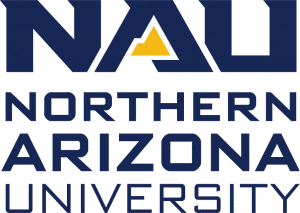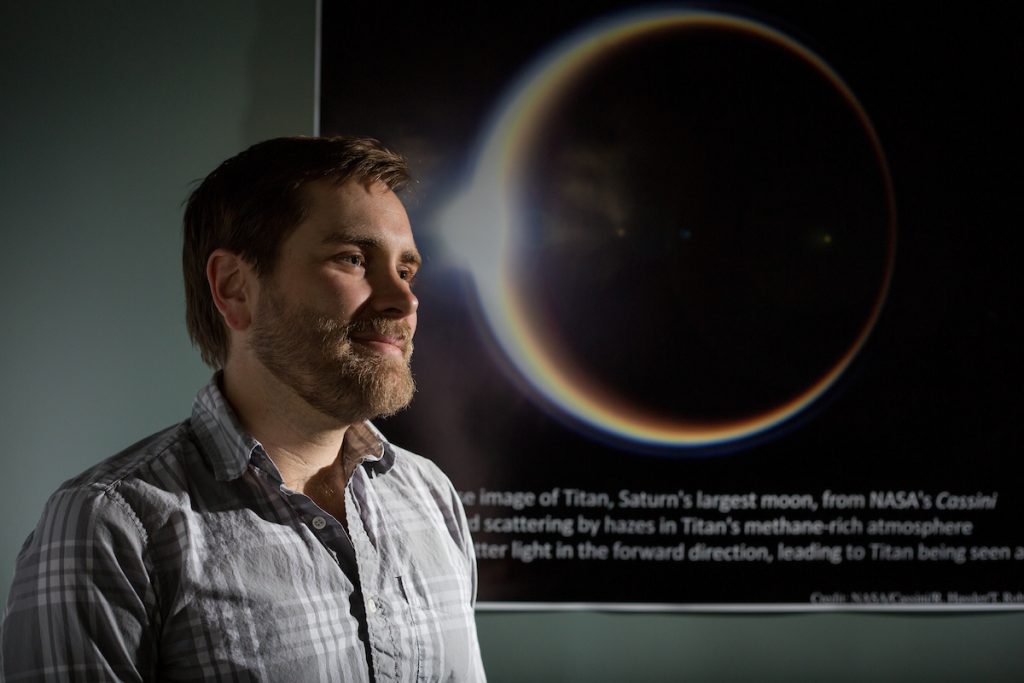Feb. 25, 2019
When 51 Pegasi b was the first planet orbiting a Sun-like star discovered outside our solar system in 1995, the question of whether life exists in other corners of our galaxy shifted from, “Do exoplanets exist?” to “How do we recognize whether an exoplanet can support life?”
Since then, NASA’s Kepler mission and ground-based surveys of exoplanets have revealed some profound findings: Earth-sized, potentially habitable worlds around other stars in our galaxy are extremely common—in fact, scientists theorize that nearly all Sun-like stars could have Earth-sized planets orbiting within their habitable zones.
As a member of two different NASA teams trying to understand habitable planets and life outside our solar system, Northern Arizona University assistant professor Ty Robinson is contributing his expertise in climate modeling, exoplanet characterization and terrestrial planet atmospheres to advance these efforts.
Virtual Planetary Laboratory project a five-year study of planetary habitability
Robinson joined the NASA Astrobiology Institute’s Virtual Planetary Laboratory (VPL) in 2007 while working on his dissertation. Recently, the VPL joined NASA’s Nexus for Exoplanet System Science (NExSS), a network of more than 75 earth scientists (including NAU research professor Paul Dijkstra), heliophysicists, planetary scientists and astrophysicists at 18 different institutions. As part of this new membership, the VPL team, led by Victoria Meadows at the University of Washington, was awarded a $10 million grant in 2018 for a five-year study of planetary habitability, of which $230,000 was awarded to NAU for Robinson’s work.
Robinson and his collaborators are using computer models to help scientists better understand which exoplanets may be habitable, based on their appearance and a range of other factors related to the chemical makeup of their atmospheres. One of their goals is better characterizing Earth’s neighbor, the planet Venus.
“Venus is instructive because of its position in our solar system, just inside the inner edge of the habitable zone,” Robinson said.
A Venus-like exoplanet could play tricks on telescopes because the clouds that make up its atmosphere prevent observers from seeing its surface.
“From a distance, it just looks like a white, reflective thing. It could fool you into thinking the planet you’ve detected isn’t anything like the actual planet, which is extremely hot and uninhabitable at the surface,” he said. “If your goal is to find habitable worlds, you might ‘waste’ time studying it.”
The team’s focus should help future researchers narrow down the search for habitable planets.
“If we spend some time now thinking about how to recognize a Venus from chemical signatures in its atmosphere, then when we see something bright and reflective around another star, we can make better observations of specific colors or wavelengths that show this is probably more like Venus, and not some other kind of reflective world,” Robinson said.
Biosignature project simulating Earth’s atmosphere at various evolutionary stages
Robinson is principal investigator on another major study for which NAU has been awarded $371,000—“Back to Basics: Assessing Earth’s Atmospheric Biosignatures from Space and Across Time.” Part of NASA’s Exobiology program, this project will investigate how best to use future space telescopes to determine whether life may be present on an exoplanet by observing the presence of certain gases in its atmosphere, such as oxygen, methane and ozone.
Robinson is collaborating with Giada Arney of NASA’s Goddard Space Flight Center and Michael Way of NASA’s Goddard Institute for Space Studies on this project as well as co-investigators Linda Sohl of Columbia University, Edward Schwieterman of the University of California, Riverside and Michael Line from Arizona State University. He will be recruiting a graduate student for the two-year project later this year.
To determine atmospheric composition of exoplanets, which can indicate a biosignature, or basic signature of life, Robinson is developing a three-dimensional spectral imaging simulator—using NAU’s Monsoon high-performance computing cluster—to generate models of what Earth may have looked like from space at various stages of its evolution. These models will help differentiate, for example, how Earth may have looked from space before the planet was inhabited as compared to how it may have looked when the planet was populated by plant life and animal life, based on the chemical composition of the atmosphere.
This research will improve the ability of future telescopes and missions, such as NASA’s James Webb Space Telescope (JWST) scheduled to launch in 2021, to find planets like Earth that may support life by using these models to determine the chemical makeup of their atmospheres.
“I hope to prove that the current designs of future telescopes, such as the Habitable Exoplanet Observatory (HabEx) and Large UltraViolet Optical InfraRed (LUVOIR) Surveyor will be fully capable of detecting Earth-like life on the exoplanets they observe,” Robinson said.
Robinson fostering a growing interest in astrobiology at NAU
Robinson has been fostering a growing interest in astrobiology at NAU since joining the university in 2017. Alongside collaborators in the Department of Physics and Astronomy, Robinson initiated a “Life in the Universe” group that attracts faculty and students from other disciplines as well, including biology, chemistry and the School of Informatics, Computing, and Cyber Systems.
“We’re coming together to discuss themes related to the origin of life on earth, habitable environments in the solar system and biosignatures in the solar system and beyond,” Robinson said.
Robinson has ambitions that NAU will develop its own astrobiology-themed team from this group.
“If we’re lucky, it could get funded directly by NASA in the future.”

(928) 523-5556 | kerry.bennett@nau.edu



